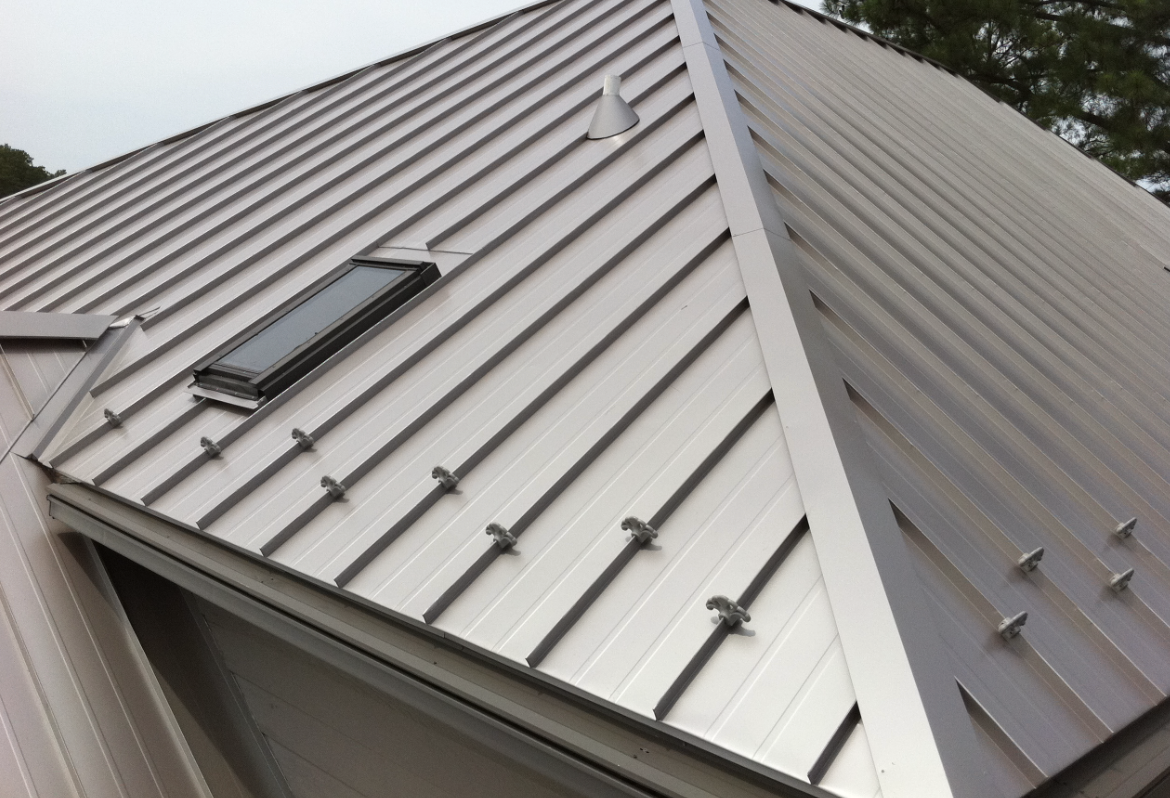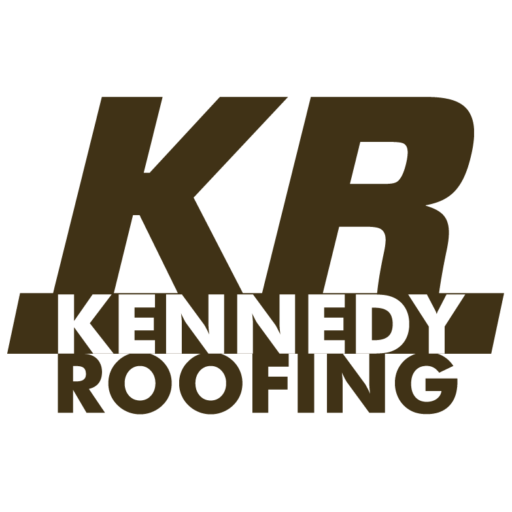
04 Jul Energy-Efficient Roofing Materials: A Guide To New Roofing
You just got the mail from your local mailman and immediately thought about how energy-efficient roofing materials are missing from your life. You don’t want to go to your mailbox, but you do have to. These past months have been extremely hot.
To keep your electricity cool, you’ve had to turn down the temperature at least half of the time. The meter readings will reveal that you used significantly more energy during summer months than usual. You open your mailbox to find your electric bill. It is, as expected, very high when you open it. How can you get some relief from this heatwave? Your current roof could be responsible for much of the energy loss.
Asphalt, tile, and steel are the most economical and efficient roofing materials. Because they absorb less sunlight, lighter roofs can be more energy-efficient and help keep your home cooler during the summer.
This guide will provide information about energy-efficient roofing materials. These materials can help you reduce your energy costs over the long-term.
Which Roofing Materials Are The Most Energy-Efficient?
Economical roofing material can be a roofing material that is affordable to install. It also helps to save money by increasing energy efficiency. A roofing contractor can use a wide range of roofing materials to cover your home. These are the most efficient and cost-effective roofing materials.
- Asphalt
- Tile
- Metal
There are many color options for asphalt roofing materials. Asphalt roofing materials can last up to 20 years. It isn’t as long-lasting as other options but it is the most economical. They are also fire resistant.
For many years, tile has been used as a roofing material. If properly maintained, tile can last up to 50 years. These roofs may not be as cost-effective as asphalt roofs when they are installed, but they can last for a long time and are extremely economical. These tiles can be made from clay, concrete, or ceramic and are fire, water, and wind-resistant.
Metal is the newest roofing material on the block. It’s great for all climates. They are one of most durable roofing materials, lasting for up to 70-years or more. Metal is somewhere in the middle of asphalt and tile in terms of cost-effectiveness. This is the longest-lasting roofing material. It can also withstand extremely high winds and is therefore fire-resistant. It requires little maintenance, which is a plus, as it is not like other roofs.
Energy-Efficient Roofing Materials Explained
Energy Star roofing is an energy-efficient roofing material that is energy efficient. Energy Star products are approved by the Environmental Protection Agency (EPA), to help homeowners cut down on energy costs. Roofs that are energy-efficient keep the house from becoming too hot in summer and the heat inside the house during winter. This lowers homeowner’s dependence on energy, and ultimately lowers their energy bills.
Roof material can include shingles and roof panels that are Energy Star certified. They may also contain reflective material that prevents the home’s heat from being absorbed by the sun. These roofing materials are also Energy Star-certified. You can also achieve energy-efficient roofing by using the following:
- A cool roof is a lighter-colored roofing material.
- Insulation under the roof should be improved
- Make sure your attic is properly ventilated
It will save you money in the long-term by ensuring that your roofer uses Energy Star roofing materials. These additional tips will help you reduce your expenses even further. If you’re looking to have a new roof installed, make sure you select lighter colors and reflective coatings.
Cool roofs can only increase the temperature of your roof by five to ten degrees. This is in contrast to regular, darker roofs which can raise temperatures up to 50 to 100 degrees. A roofer will make sure that your roof is properly insulated between the attic ceiling and the roof. An HVAC contractor can help you explore your options for ventilation in your attic.
How Energy-Efficiency Relates To The Color Of Energy-Efficient Roofing Materials
You may feel tempted to choose darker colors if you’re considering replacing your roof. This could be because it is the current color of the roof. Or, it may be for aesthetic reasons. It seems that darker roofs keep your house cooler, according to intuition. It is true that standing in shade on a hot day makes it slightly cooler than sitting in direct sunlight. The opposite is also true. Because darker colors absorb more light, they are better at absorbing it. A darker roof will heat up your home in summer. This will make your AC work harder.
Urban heat islands are helped by darker roofs. This is an unnatural heat phenomenon caused by heat-absorbing buildings and pavements, according to the EPA. Because there is very little greenery, this effect is most noticeable in urban areas. This phenomenon is caused by the dark roofs, which not only heat your home but also heat the surrounding neighborhood. Dark roofs also trap heat, which warms the plywood underneath your roof shingles and makes your attic 10 to 15 degrees warmer than the outside temperature.
While darker roofs are often criticized for their ability to trap heat, they can be a good option if you don’t live in a hot area. It is already very hot in this area so you need to do everything you can to lower the temperature and reduce your energy bills. It is a good idea to replace your roof that is darker than you like with one that is lighter.
The Best Color Roof To Improve Energy Efficiency
It is a rule of thumb that darker colors absorb and lighter colors reflect. This applies to roofs as well. Roof temperatures can reach up to 50 degrees on a hot day if you use darker roofing materials. Attics will become much hotter from the heat of asphalt roofs. This will heat up your whole house, making it more difficult for your HVAC system to maintain a comfortable temperature. Cool roofs are lighter-colored roofing materials that only increase the roof’s temperature five to ten degrees. Below the roof, temperatures will not be affected. Lighter roofs are more likely to heat your house. You won’t have to heat your home as much in summer because you won’t need to use your energy as often or at a lower temperature.
Which color roof is more energy-efficient if it’s a lighter color? In hot climates, white roofs are the best choice. White roofs can deflect between 60 and 85 percent of the ultraviolet rays that hit your roof, which can dramatically lower your roof’s temperature. This combined with a metal roofing material that is energy efficient can help you reduce your energy bills. Your summer energy costs could be reduced by up to 40%. Although white might not be the best choice for your roof, it will make your home more energy efficient and reduce your long-term energy costs.
Potential Energy Savings
What changes can you expect to see in your energy bills after making roof changes? A new roof will make your home more efficient. It will help keep the sun out by removing cracked tiles and asphalt. The roof will stay cooler if it is made of lighter roofing materials. These changes can significantly reduce your energy bills. According to a recent study, cool roofing can save you about 50 cents per sq foot in energy costs each year. Your annual savings for a 1800-square-foot roof could be as high as 900 dollars
Summary
How can you make your roof more energy-efficient? There are many options. A white metal roof may provide the best energy efficiency. The roof’s color and type are highly reflective, making them one of the most efficient roofing materials.
If you don’t like white or metal, it is better to choose a roofing material such asphalt or tile with a lighter color. Both are economical and will give you greater energy efficiency. A green roof is a good choice if you have a flat or low pitched roof. To make the changes to your roof and garden, you will need to consult a roofing contractor. A roofer might also need to make sure that your roof materials are water resistant, particularly if you plan on watering your garden often.
Are you looking for more information about making your roof more energy-efficient? Kennedy Roofing has the experience and expertise to replace or repair your roof with quality materials and excellent craftsmanship. We have been family-owned and operated for over 40 years.
We service a multitude of areas in West Central Florida including:
- Anna Maria Island,
- Plant City,
- Apollo Beach,
- Bradenton,
- Brandon, and Seffner,
- Ellenton,
- Gibsonton,
- Longboat Key,
- North Port,
- Port Charlotte,
- Valrico,
- Palmetto,
- Punta Gorda,
- Riverview,
- Sarasota,
- Sun City Center,
- Tampa Bay,
- Venice,
- Lake Whales, and all points in between!
All our roofs are backed by a 15-year leak-free guarantee, the highest in the industry. Our Owens Corning shingle roofs are backed by a 50-Year Platinum Warranty that includes materials and labor. While most of our business is residential, we also handle commercial roofing projects. Check out our 5-star reviews and be sure to contact us today for more information on energy-efficient roofing materials!



Sorry, the comment form is closed at this time.